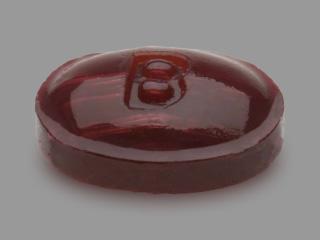Menthol Topical Dosage
Medically reviewed by Drugs.com. Last updated on Jul 18, 2025.
Applies to the following strengths: 7.4 mg; 2.5 mg; 2%; 1.4%; 4%; 5%; 0.15%; 6.5%; 7.6 mg; 7.5 mg; 5.4 mg; 5.8 mg; 1.6 mg; 10%; 8 mg; 10.5%; 2 mg; 1.7 mg; 3.3 mg; 16%; 1%; 0.8%; 7.5%; 2.5%; 0.5%; 7%; 9%; 1.25%; 1 mg; 10 mg; 5.52 mg; 8%; 4.5%; 3%; 6%; 3.5%; 0.1%; 3.7%
Usual Adult Dose for:
Usual Pediatric Dose for:
Additional dosage information:
Usual Adult Dose for Cough
Menthol 1.7 mg lozenge: Dissolve 3 lozenges (one at a time) slowly in the mouth every 2 hours as needed
Menthol 3.3 mg lozenges: Dissolve 1 to 2 lozenges (one at a time) slowly in the mouth every 2 hours as needed
Menthol 5.4 mg lozenges: Dissolve 1 lozenge slowly in the mouth every 2 hours as needed
Usual Adult Dose for Pain
Menthol 2.5% and 10% gel: Apply to affected area not more than 3 to 4 times a day
Menthol 2.5%, 4.5%, and 10% gel, and 5.138% stick: Apply to affected area not more than 3 to 4 times a day
Menthol 3.5% and 4% gel, 10% cream, and 5% gel roll-on: Apply a thin film to affected area not more than 4 times a day; massage not necessary
Menthol 3.7%, 6%, 8%, 10% and 10.5% spray, and 8% roll-on liquid: Spray/apply directly onto affected area with no need to rub, massage, or bandage, repeat as needed
Maximum dose: 4 applications per day
Menthol 7% and 16% gel, and 10% roll-on liquid: Apply generously to affected area not more than 3 to 4 times a day; massage into painful area until thoroughly absorbed
Menthol 10% cream: Apply a thin film to affected area not more than 4 times a day; massage not necessary
Menthol 5% patch: Apply 1 patch for up to 8 hours, repeat as needed for no more than 4 times a day
Menthol 7.5% patch: Apply 1 patch for up to 12 hours once a day
Menthol 16% patch: Apply 1 patch, repeat as needed no more than 3 times a day
Usual Adult Dose for Pruritus
Menthol 0.5% lotion: Apply to affected area up to 3 to 4 times daily
Menthol 1% powder: Apply freely to clean feet (over feet, between toes, on bottoms of feet, and in shoes) up to 3 to 4 times a day
Usual Pediatric Dose for Cough
Menthol 1.7 mg lozenge:
5 years and older: Dissolve 3 lozenges (one at a time) slowly in the mouth every 2 hours as needed
Menthol 3.3 mg lozenges:
5 years and older: Dissolve 1 to 2 lozenges (one at a time) slowly in the mouth every 2 hours as needed
Menthol 5.4 mg lozenges:
5 years and older: Dissolve 1 lozenge slowly in the mouth every 2 hours as needed
Usual Pediatric Dose for Pain
Menthol 2% gel:
2 years and older: Apply liberally to affected area not more than 3 to 4 times a day
Menthol 2.5%, 4.5%, 10% gel, and 5.138% stick:
12 years and older: Apply to affected area not more than 3 to 4 times a day
Menthol 3.5% and 4% gel, 10% cream, and 5% gel roll-on:
2 years and older: Apply a thin film to affected area not more than 4 times a day; massage not necessary
Menthol 3.7%, 6%, 8%, 10% and 10.5% spray, and 8% roll-on liquid:
12 years and older: Spray/apply directly onto affected area with no need to rub, massage, or bandage, repeat as needed
Maximum dose: 4 applications per day
Menthol 7% and 16% gel, and 10% roll-on liquid:
12 years and older: Apply generously to affected area not more than 3 to 4 times a day; massage into painful area until thoroughly absorbed
Menthol 10% cream:
12 years and older: Apply a thin film to affected area not more than 4 times a day; massage not necessary
Menthol 5% patch:
12 years and older: Apply 1 patch for up to 8 hours, repeat as needed for no more than 4 times a day
Menthol 7.5% patch:
12 years and older: Apply 1 patch for up to 12 hours once a day
Menthol 16% patch:
12 years and older: Apply 1 patch, repeat as needed no more than 3 times a day
Usual Pediatric Dose for Pruritus
Menthol 0.5% lotion:
2 years and older: Apply to affected area up to 3 to 4 times daily
Menthol 1% powder:
2 years and older: Apply freely to clean feet (over feet, between toes, on bottoms of feet, and in shoes) up to 3 to 4 times a day
Renal Dose Adjustments
Data not available
Liver Dose Adjustments
Data not available
Precautions
CONTRAINDICATIONS:
- Hypersensitivity to any of the ingredients
- Use only as directed
- Do not use internally, with heating pads or devices, or on wounds or damaged skin (menthol gel)
Safety and efficacy have not been established in patients younger than 2 years; this drug is not recommended for use in these patients.
Consult WARNINGS section for additional precautions.
Dialysis
Data not available
Other Comments
Administration advice:
- Do not apply to wounds or damaged skin.
- Do not apply tight bandages or heat over the treatment area.
- Avoid contact with eyes.
Patient advice:
- Keep out of reach of children
More about menthol topical
- Check interactions
- Compare alternatives
- Pricing & coupons
- Reviews (32)
- Drug images
- Side effects
- During pregnancy
- Drug class: topical rubefacient
Patient resources
- Menthol lozenge oral mucous membrane drug information
- Menthol topical
- Menthol Aerosol
- Menthol Aerosol Powder
- Menthol Cream, Lotion, and Ointment
Other brands
Biofreeze, Stopain, Halls Mentho-Lyptus Drops, Bengay Ultra Strength Pain Relieving Patch, ... +20 more
Related treatment guides
See also:
Further information
Always consult your healthcare provider to ensure the information displayed on this page applies to your personal circumstances.


